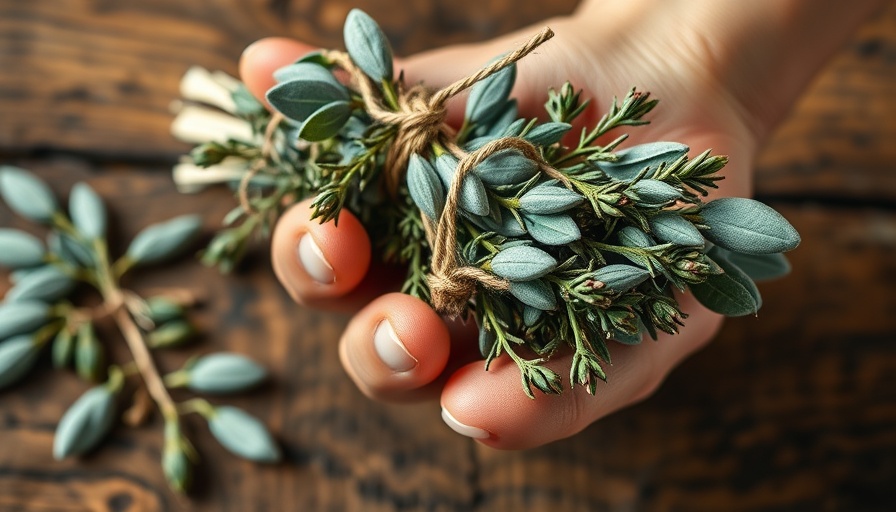
Unlocking the Secrets of Sage: A Culinary and Healing Herb
The sage plant, often celebrated for its culinary prowess, is more than just a flavorful addition to dishes; it’s a hardy herb bursting with health benefits and even ecological advantages. Whether you're a backyard gardening weekend warrior or someone looking to spice up your meals, sage deserves a place in your garden.
History and Cultural Significance of Sage
Known by its scientific name, Salvia officinalis, which means 'to save,' sage has a storied history that spans thousands of years. Ancient civilizations, particularly the Greeks and Romans, revered this herb for its medicinal properties, employing it to preserve meat and combat illness. Beyond its culinary applications, sage has been used in rituals and traditional medicine, showcasing its cultural importance. Understanding this history can enhance our appreciation and respect for sage as we cultivate it today.
Health Benefits of Growing Sage
Sage is celebrated not only for its flavor but also for its vast health benefits. Containing anti-inflammatory, antibacterial, and antifungal properties, it serves as a natural remedy for a range of ailments. Infusing sage into honey or sipping fresh tea made from its leaves can soothe a sore throat and even reduce digestive issues. Incorporating sage into your diet can also provide antioxidants that combat oxidative stress, making it a valuable companion to your meals.
Growing and Caring for Sage: Simple Tips
For those ready to embrace gardening, sage is an ideal starting point. This perennial herb thrives in well-drained soil and prefers full sun, making it suitable for many climates (Zones 5-8). Here are some essential tips for success:
- Soil Preparation: Ensure the soil has good drainage. Amend it with compost to enhance nutrients.
- Watering Needs: Water the young plants until established but refrain from overwater to prevent root rot.
- Harvesting Techniques: Regularly trim sage leaves to promote new growth and keep the plant bushy.
Sage as a Companion Plant: Enhancing Your Garden's Ecosystem
Growing sage isn't just about personal benefits. Its fragrant flowers attract beneficial pollinators like bees and butterflies, enriching your garden's biodiversity. By planting sage alongside vegetables or flowers, you can deter harmful pests, creating a natural balance in your garden ecosystem. Additionally, its strong aroma can repel unwelcome guests like aphids and cabbage moths.
Preserving and Using Sage: Culinary Inspiration
Once you've successfully grown sage, knowing how to preserve and utilize it is key. Fresh sage can be used in marinades, dressings, or as a seasoning for meats and vegetables. For longer preservation, consider drying sage leaves or creating sage-infused oils. These can add a delightful punch to your culinary creations, inspiring recipes beyond the ordinary.
The Power of Sage in Modern Living
In today’s world, as people seek to incorporate more natural and healthy ingredients into their diets, sage stands out as an essential herb. Whether for flavor or health, this simple garden plant holds the potential to impact wellness positively. Moreover, cultivating sage can foster a deeper connection with nature and the food you consume, promoting mindfulness and sustainability in daily living.
Final Thoughts: Planting the Seeds of Change
With all its culinary, health, and ecological benefits, it’s time to consider adding sage to your home garden. Whether planted in a dedicated herb garden or as part of a vibrant vegetable patch, sage is not just an herb — it's a testament to the healing powers of nature and a bridge to healthier living. Start your gardening journey today and unlock the benefits sage has to offer!
 Add Row
Add Row  Add
Add 




Write A Comment